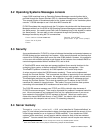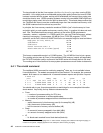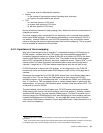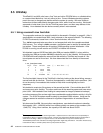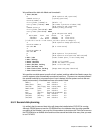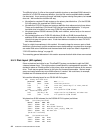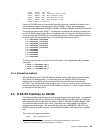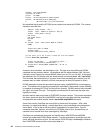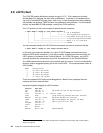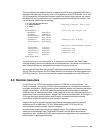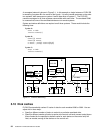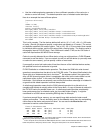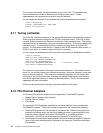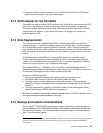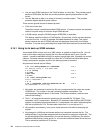Chapter 5. Additional Topics 47
Several special options are available for FakeTape resource definitions:
c3480: cu 3480
options ‘maxwritesize=200,allowdisconnects,allowmountccws,autoloader’
device(00) 3480 OFFLINE
end c3480
The maxwritesize option is important. It specifies (in megabytes) the maximum size of an
emulated output tape. If your output approaches this size, FakeTape will signal an
end-of-tape reflective marker. The S/390 program would usually write trailer labels at this
point. In any case, FakeTape will write additional records but signal end-of-tape for every
additional write request. If you do not specify a maxwritesize value, two exposures occur:
You might consume all the free space in the server file system.
You will never have end-of-volume processing (triggered by an emulated end-of-reel
reflective marker).
In our opinion, you should always have a maxwritesize specification when using FakeTape.
Unfortunately, you cannot specify option values in a FLEX-ES mount command. You need to
code a specific maxwritesize value in the resources definition and this will apply to any file
(emulated tape volume) mounted on the device containing the maxwritesize parameter.
(The maxwritesize parameter also applies to DAT tapes. DAT drives do not signal that they
are near the end of the tape (to permit trailer records to be written). They signal end-of-tape
and nothing more can be written. A well-selected maxwritesize can overcome this limitation.)
The other options are more specialized and you may never need them with FakeTape.
5.7 Multi-system setup
You can define multiple S/390s by defining multiple FLEX-ES system definition files and
compiling them. You can run multiple S/390 systems, one at a time, by simply creating
multiple shell scripts (see “Building a shell script” on page 29) that name the appropriate syscf
file in the flexes command. You can run multiple S/390 systems at the same time (multiple
instances) if you have enough ThinkPad/EFS memory and have defined your FLEX-ES
resources appropriately.
Only one resource definition (rescf file) can be active on a server, so it must define all the
resources needed by all the S/390 instances. Each S/390 instance must be started with a
unique system definition (syscf file). You would normally start a separate CLI window, with its
flexes prompt, for each instance. Some care is needed to use the right flexes windows when
controlling the S/390 instances. The CLI command set prompt can be used to change the
flexes prompt to something more meaningful for each instance.
The redbook NUMA-Q Enabled for S/390: Technical Introduction, SG24-6215, describes the
simultaneous operation of OS/390, VM/ESA, and VSE/ESA instances. A NUMA-Q system
(now named x/Series 430 EFS) is larger than a ThinkPad/EFS system, but the details for
running multiple FLEX-ES instances are the same. (One exception is that, with more Server
processors, it is possible to use dedicated processors for multiple instances on the NUMA-Q
machine, whereas this is not possible on a ThinkPad.)



